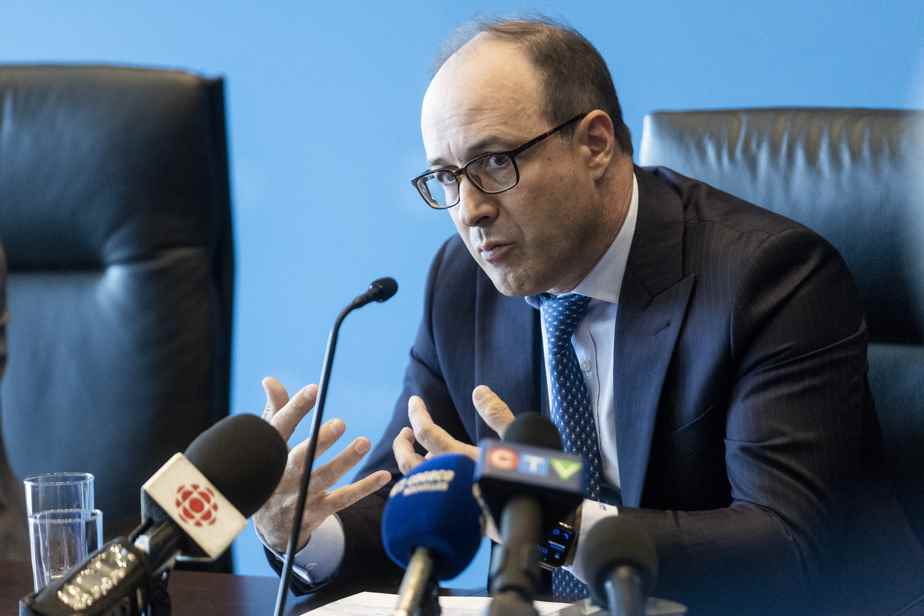The Caisse de depot et placement du Québec (CDPQ) saw red by losing 33.6 billion during the first six months of the year, where the return was -7.9%. While the woolen stockings of Quebecers estimate that they have recovered half of the losses thanks to the summer stock market upturn, there is no guarantee that this trend will continue.
Updated yesterday at 5:07 p.m.
Inflationary fears, geopolitical tensions and fears of recession; the yellow lights remain numerous after what was called by the institution “the worst half of the last 50 years for the stock and bond markets”.
“We anticipate that the rest of the year will be extremely difficult,” admitted Charles Émond, the manager of public and parapublic pension and insurance plans, on Wednesday, at a press meeting to comment on the results, where he tried repeatedly to temper the scale of the decline.
We have to go back to 2020, when the COVID-19 pandemic paralyzed the global economy, to see the Caisse post a negative half-year return. At -2.3%, however, the decline was less pronounced.
Small consolation: the performance of the CDPQ is higher than its benchmark index, established at -10.5%. Moreover, the results as at June 30 do not take into account the recovery that has been observed on the stock markets for more than a month.
“Yes (there was a drop) of around thirty billion, but if we took the picture today (on our performance) the portrait would be different. We would have 15 billion more in our assets. We must be careful, this does not mean that it will continue (the markets) to rise. »
The declines were recorded in all asset classes during the first six months of 2022 with the exception of infrastructure and real estate. This last category nevertheless delivered a performance below its benchmark index.

For its part, the Caisse’s net assets, which stood at 420 billion at the end of December, fell to 392 billion six months later. The institution received 5.4 billion in net deposits, which mitigates the decline. According to the RBC Investor & Treasury Services Pension Universe, the average return for Canadian pension funds was -14.7% in the first half.
Emphasis on caution
In an environment where investors witnessed the first simultaneous stock and bond market correction since 1969, the largest inflationary spurt in 40 years – which forced central banks to raise interest rates – and In a tense geopolitical context, in particular due to the war in Ukraine, the CDPQ will have to resolve to opt for a defensive approach.
“Sometimes, I’ve been quoted saying that we want to orient ourselves more in the style of growth,” explained Mr. Émond. You have to understand that we make much less of it than what we find in the markets. I want to reassure people. We are there to protect the capital of our depositors and that we do not go into different levels of risk. »
In comparison
The CDPQ also had a more difficult first half compared to other pension plan asset managers. In Ontario, the teachers’ pension plan (Teachers) – whose net assets are $242.5 billion – obtained a net return of 1.2% at the end of the first six months of the year.
For its part, the Canada Pension Plan Investment Board (CPPIB), with net assets of 523 billion, lost 4.2% between April and June, after a decline of 2.9% after the period from January to March.
“I always make sure to comment on the performance of my peers,” replied Mr. Émond. When asked about Teachers. They are very much about controlling inflation. The notion of inflation is integrated. We don’t always have the same mandate. »
Management fees also seem to be on a downward slope after the sharp rise recorded last year. As of June 30, annualized costs were 52 cents for every $100 of assets, compared to the ratio of 57 cents last year. In 2020, the ratio was 49 cents.
Learn more
-
- 46
- Number of CDPQ depositors. These include the Quebec Pension Plan and the Government Employees Plan (RREGOP).
SOURCE: Caisse de dépôt et placement

